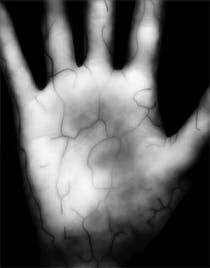Optical as accurate as histopathology-and less costly

An article published in The Lancet Oncology reports that new optical technologies incorporating white-light colonoscopy (WLC), non-magnifying narrow-band imaging (NBI), and chromoendoscopy have enhanced the ability to diagnose and manage small polyps seen at routine colonoscopy. The new approach "could be a more efficient and cost effective alternative to conventional histopathology," according to the report.
Researcher Ana Ignjatovic of St. Mark's Hospital and Imperial College London (London, UK) and colleagues compared the diagnosis of 363 small colorectal polyps (<10mm) in 130 patients. The polyps were evaluated by four colonoscopists with different levels of experience, using both optical methods and histopathology. Overall, optical diagnosis accurately identified up to 93% of small colorectal polyps (186 of 198 precancerous adenomas and 55 of 62 hyperplastic polyps)–similar to the overall diagnostic accuracy of standard histopathology. Expert colonoscopists had an accuracy of 95% for optical diagnosis and non-experts 87%.
"The short learning curve for NBI...supports early adoption, even outside academic centres. As NBI equipment and experience becomes widespread, optical diagnosis for small colonic polyps could become acceptable standard of care in routine non-academic clinical practice," the authors wrote.
The optical diagnosis also enabled 82 of the 130 patients to be given a follow-up colonoscopy date immediately after the procedure, providing a further cost savings.
NIR hand scan assures patient record matching
El Camino Hospital (Mountain View, CA) is one of only a handful of hospitals nationwide to have implemented biometric technology to protect patient privacy. Patients began using the new system as part of their registration process in November. Being admitted to the facility as a patient now involves placing one's hand over a device that scans the unique vein structures in one's palm.
The scanner El Camino Hospital has incorporated into its new registration and identification system is the Fujitsu PalmSecure, which uses near infrared light to capture a patient's palm vein pattern. Once it has scanned a patient's palm, the system generates a unique biometric template that it matches against a database of enrolled users' palm vein patterns. The vascular pattern recognition technology promises a highly reliable type of authentication; Fujitsu says the PalmSecure has a false acceptance ratio of just 0.00008 percent. The technology is also fast and non-intrusive.
El Camino has integrated PalmSecure with HT Systems' PatientSecure and McKesson's Star Hospital Information Systems. The combined solution protects patient privacy and helps to prevent medical identity theft while allowing patients to receive timely, accurate care.
Looking for LASIK input
The U.S. Food and Drug Administration has reopened a public docket to gather information and comments on LASIK (laser-assisted in situ keratomileusis) devices for refractive surgery. The docket will remain open until November 15, 2010 (it was previously open September 2008 until September 2009). The goal is to help the agency identify ways in which it can improve public outreach efforts regarding the safety and effectiveness of LASIK. You can submit comments and information at www.regulations.gov; reference docket number FDA-2008-N-0488.
About the Author

Barbara Gefvert
Editor-in-Chief, BioOptics World (2008-2020)
Barbara G. Gefvert has been a science and technology editor and writer since 1987, and served as editor in chief on multiple publications, including Sensors magazine for nearly a decade.
